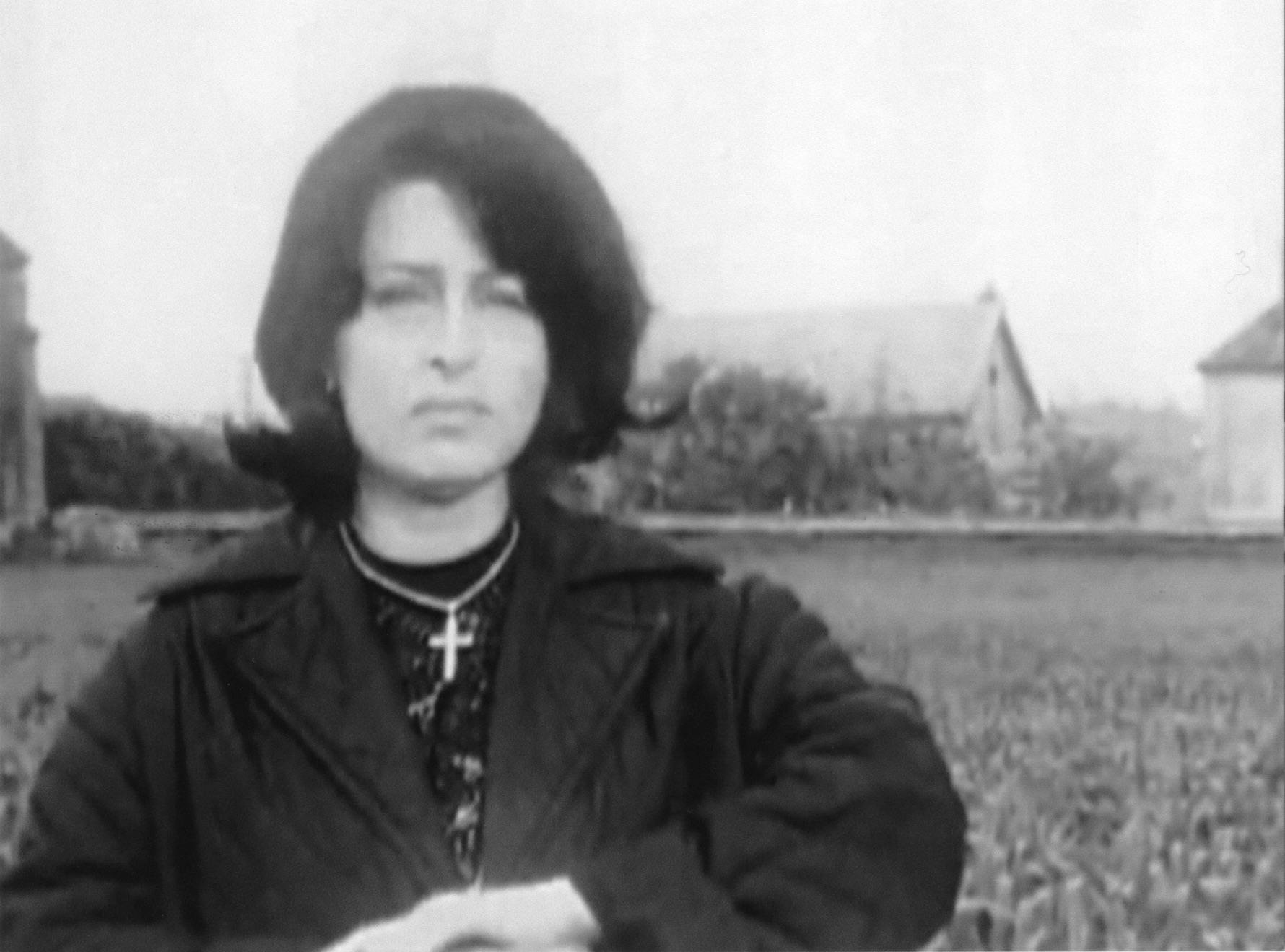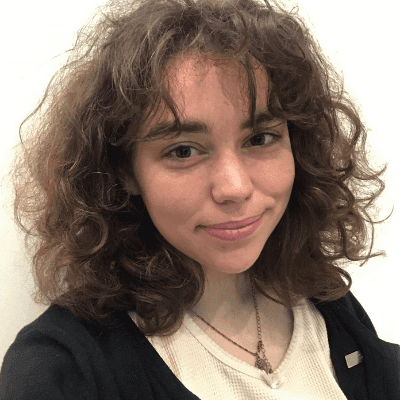“memory is just hips that swing
like a clock
the past projects fantastic scenes
tic/toc tic/toc tic/toc
fuck the clock!”
— Patti Smith, Babel (1)
“To repeat is to behave in a certain manner, but in relation to something unique
or singular which has no equal or equivalent. And perhaps this repetition at the
level of external conduct echoes, for its own part, a more secret vibration which
animates it, a more profound, internal repetition within the singular.”
— Delueze and Guttari, Difference and Repetition (2)
The motion of a clock is necessarily cyclical. Even digital clocks find themselves circling back to the same point eventually. “Suara Welitoff: Right Now This Moment” considers the effect of repeated motion, without the linear constraints presented by time. Using film as her medium, Welitoff explores temporality, duration, and repetition.
A survey of 12 of Welitoff’s videos is on view in the Grossman Gallery and Anderson Auditorium at the School of the Museum of Fine Arts at Tufts. Little context is given to the videos within the exhibition spaces. In place of wall plaques, laminated cards are provided at the front of the exhibit next to the introductory text. The cards, surprisingly, provide limited information beyond the titles. Overall, the design of the exhibit is contemplative. Something in the arrangement calls back to the Medieval church, where the faithful illiterate would decipher the murals on the holy walls. Because there is not detailed text on the walls, we too are left to read the images. Welitoff’s practice is not one that we are that we are necessarily well versed in, though, and unlike the earlier Roman Catholics, there is no best interpretation and no higher power. The auditorium is dark and cave-like. Two benches sit solemnly in the middle of the austere, textless walls, almost ritualistic in their placement at the center (you as the sacrifice, the videos as witnesses). The Grossman Gallery has a lower ceiling and overhead lights that beam down, breaking up the darkness in walls. The circle of light in front of one of the videos suggests that the viewer’s placement there is important and intentional. The design is well suited to the art: it lets the viewer know that the exhibit requires intent in presence. It is possible to get a sense of construction of the works with a glance, however, form is not the only part of the story in these videos. As contemporary artist and writer Hannah Black once tweeted, “Americans still say ‘conceptual art’ cuz they think there’s another kind”(3). This is to say that the works are not loud, intricate, or particularly visually complex, but they are certainly not simple either.
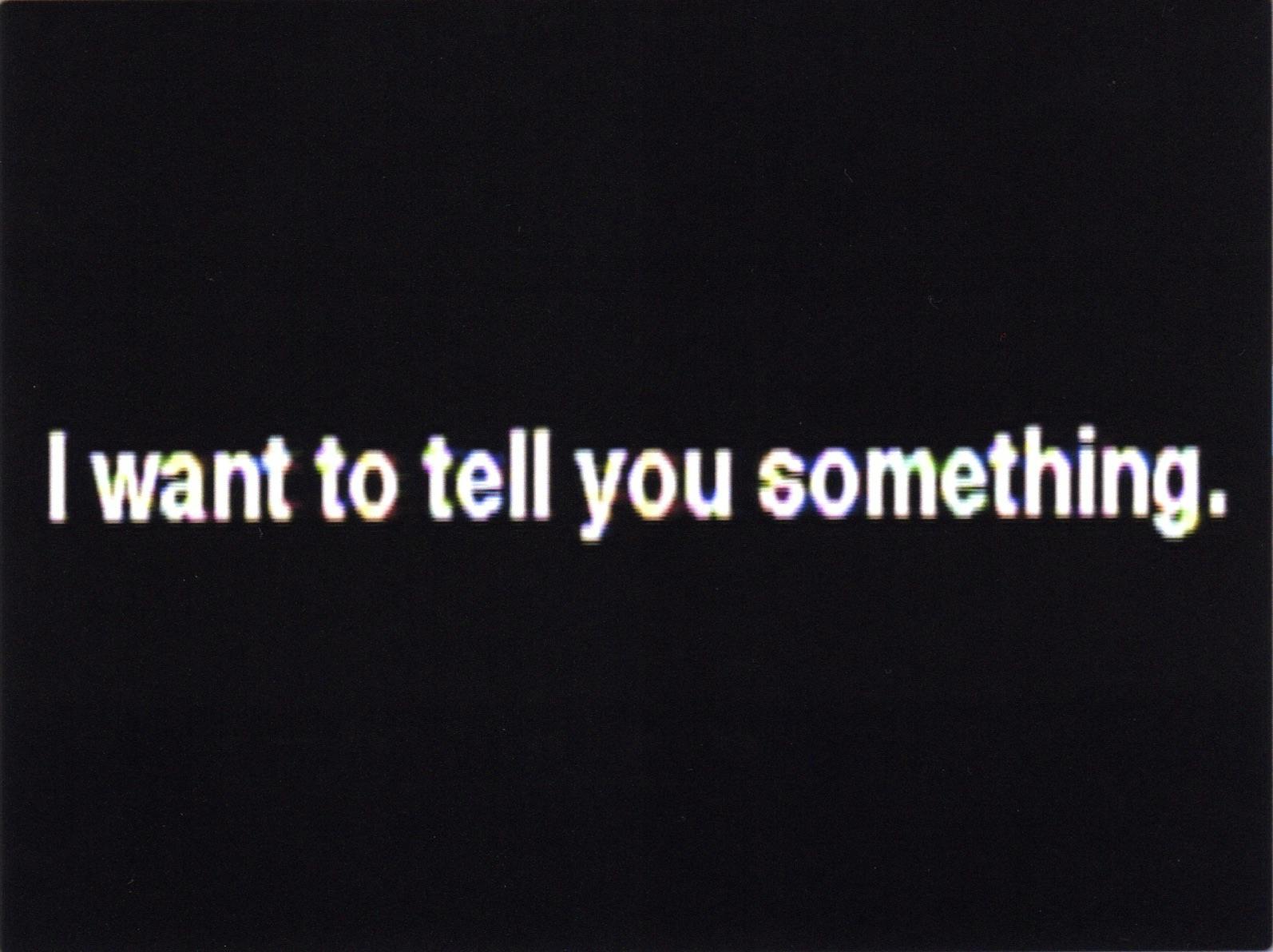
I want to tell you, 2017. Continuously looping video (silent)
Each of the films run on a continuous loop, making it difficult to discern a clear start or end. The videos are immediately characterized by their silence, creating, at times, a deafening lull in the gallery space as the air conditioner hums steadily. Additionally, and most crucially, all of the footage in Welitoff’s films is appropriated. The combination of relapse and reuse creates a poignant insight into the relationship between repetition and replication—a relationship that gives form to the exhibition. In an interview from Kunstgespräche, Welitoff says, “I never want it to be about the past. That’s the really important thing for me. For me, it’s about being alive right now”(4). She reiterates the emphasis on the present, saying that her work is not concerned with nostalgia. Presentness becomes evident as the viewer moves through the show. The videos make use of the constraint of repetition to draw attention to the particular, the specific, the moment. Monotony plays out on the screen, which in turn, allows space to notice subtle shifts.
Viewers are first greeted by “I want to tell you.” On a black screen, the title phrase is written in white, flickering slightly as the projection plays and starts over. There are five pieces in the exhibition that use text to assist in conveying a message. One of these intermediary works is “Five years later.” In the film, “FIVE YEARS LATER” is written across streaming clouds in an antiquated serif font. The video is black and white, the clouds rendered in various shades of gray behind the strip of white letters. A question is embedded in the words: five years later than what? When Welitoff employs text, she leaves the viewer even more curious about the construction of time. Two other films present equally ambiguous demarcations: “Two Years” being one of them, and “The End” being another.
“Two Years” again is alluding to a specific period, but the significance of the measurement is left unknown. “DEUX” and “ANS” are displayed on two monitors. The monitors are placed in the back of the smaller gallery, glowing into the dark of the relatively small space. A light shines down from above, in a circle just in front of the work, so that whoever views the work from close up will place themselves in the light. Given the viewer can figure out the French on the screen, then it is clear that it is a marking time, but it is enigmatic. Welitoff rarely fully gives herself away.
In “The End” the title, again, sets the scene of the piece. On a black screen, the words “THE END” flicker as though a reel is projecting them. In fact, they are on a TV screen (this is the only work that has its own pedestal and is not mounted or projected on a wall). The text is further abstracted by their upside down orientation. The font and faux age of the projection contrasts with the clunky plastic TV monitor. It is neither sentimental nor contemporary, a confluence specific to a moment. The viewer is given another opportunity to reflect on the statement displayed. “The End” refers to an infinite of possible significance. All, despite their specificities, are true.
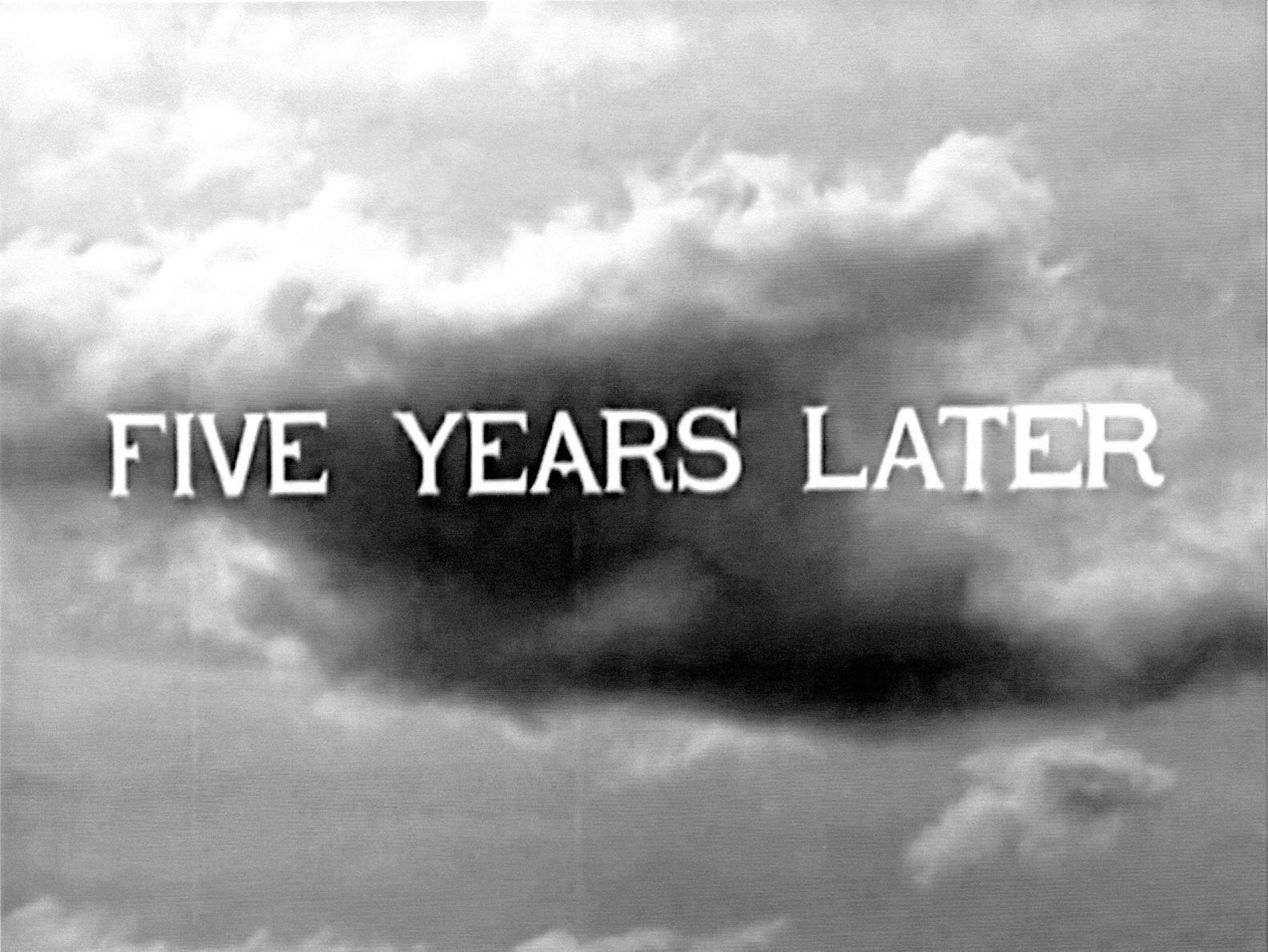
Five years later, 2013. Continuously looping video (silent)
SMFA guest curator, Susan L. Stoops, seems to have been deliberately playful in the placement of videos utilizing text. These works act as markers, the first inviting you in, the last letting you go; language acts as a reminder of passing of time. “I want to tell” stands at the entrance and “The End” towards the exit while “Two Years” and “Five Years Later” are guides along the way. Attention to the moment is heightened by the fact that all the videos are silent. Text, in this case, is paramount to the narrative that Welitoff has created.
Other works use figural appropriations to denote the disconcerting resonances of time. “Yet to be titled” uses footage from Jan Nemec’s “A Report on the Party and the Guests”(5). In the short clip taken from the film, a man in a suit blows out candles on a delicate candelabra. The curve of his hairline moves down towards the candles, his eye obscured by Buddy Holly glasses. A woman sits in a chair beside him, but as only her forearm and hands are within frame, the rest of her being is left up to imagination. As the smoke moves in towards his face, the color changes from black and white, to red and teal—like the negative of an already obscured colored photograph. As the color fluctuates, the video plays and rewinds in sporadic intervals, jutting forward and backward before relaxing.
“The air between us” is the only piece that lacks both text or figures entirely. The image is adopted from a clip of Andy Warhol interviewing Mick Jagger, but it is impossible to place (6). A flat screen displays variations of blue, intense but light in shade, almost as though the screen has suffered water damage. Brightest in the top left corner, the sky blue stretches and fades towards the left side of the screen. Any movement on the screen is illusion or imagination, the image itself, though looped video, doesn’t move. Despite the lack of any distinguishable forms and movement, the faint blue alludes to motion, as though looking down on the surface of a body of water.
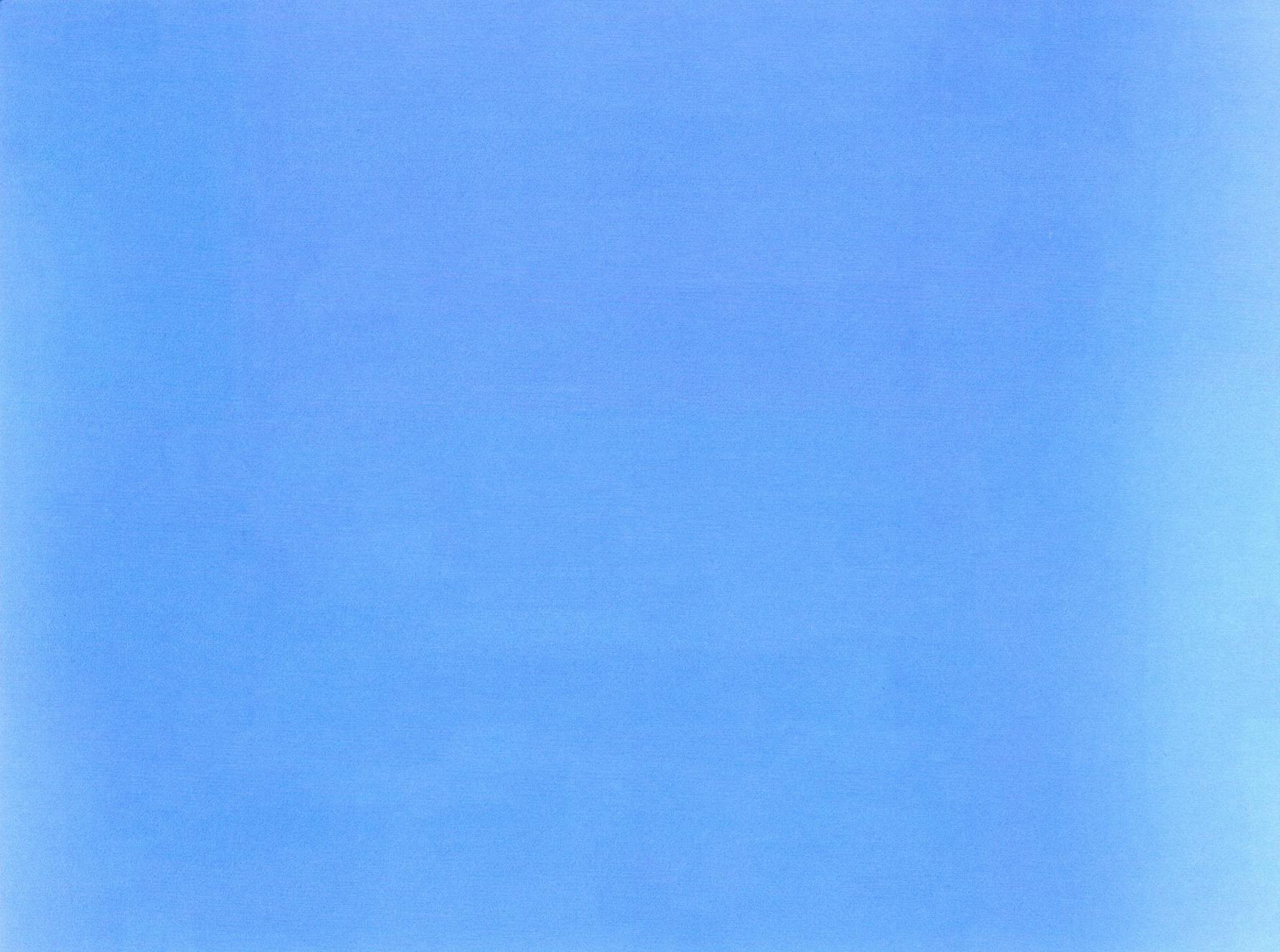
The air between us, 2017. Continuously looping video (silent)
Rainer Werner Fassbinder is perhaps the filmmaker from whom Welitoff takes the most footage in “Right Now This Moment.” Her piece, “Too hot to fly” uses footage from Fassbinder’s 1970 film, “Gods of the Plague”(7). Welitoff has not altered the original black and white of the movie. In this scene, a group of people, who, based on their gestures, seem to be intimate with one another, sit at a picnic table set against the white wall of a house. The individuals stand from their seats and then, in reverse, sit back down. The rewinding makes their exercise seem especially futile, as not only do they end up in the same place, but have to work backwards to get there. The cyclical motion refers to the footage source; “Gods of the Plague” is about people who are trapped in patterns determined by circumstance. Both the source material and the title connect moments in which people are limited by a particular situation playing out over a short period of time while the ripple effects feel unknown.
“Everything is Different” is one of the few colored films included in the exhibition. It is intimate in a way that feels cathartic for the exhibition. The video utilizes a still from “Katzelmacher,” another Fassbinder film, released in 1969 (8). The colors are altered, seemingly simultaneously saturated and faded. Pink, yellow, orange and lavender flash on the screen. The still is from a moment in the film when one character rests her head on her companion’s shoulder. The figures, indeed, are only distinguished from one another by contrasting colors; bright orange marks of the masculine form contrast the soft purple of the feminine. A doorway and window on the right illuminates the woman’s back, shrouding her in a bright, almost glowing white. There is a possible third person in the window behind them, but it is just as possible that it is an inanimate object. We know all too well that the brain seeks out human figures even where there are none. A staircase leads further in the interior of the space behind the man, and another doorway on the upper floor almost perfectly frames his head. His fluorescent head tilts down into the curl haloed head of his companion. Their bodies lean into each other, or appear to, in mutual trust. The forms are softest on their exterior, blurring into the surroundings.
Meanwhile, distorted audio of faint voices and a distant piano plays in the background, adding to the disorienting nature of the film. Unlike several of the looping pieces in Welitoff’s oeuvre, “Everything is Different” possess a clear beginning and end. Here, the audio is used as a demarcation of the passage of time. As the piano notes get louder, the image slowly fades into nothing until a single white rectangle is left empty on the grey gallery wall.
As is typical with Welitoff’s work, it is hardly imperative for the viewer to understand the context of the extracted footage. While I interacted with “Everything is Different” without the knowledge of Fassbinder’s film, the impact was still more intense than any other piece in the exhibition. I latched onto what I perceived to be intimacy between the couple, leaving the work feeling deeply sentimental. In reality, the fictional couple’s relationship is fraught, abusive, and short. Still, Welitoff does something important in bringing this sense of intimacy to her considerations of time and movement. Hers is not a formalist consideration of the ways in which linear time have been made and understood, but welcomes viewers into a space where time could be measured through emotion.
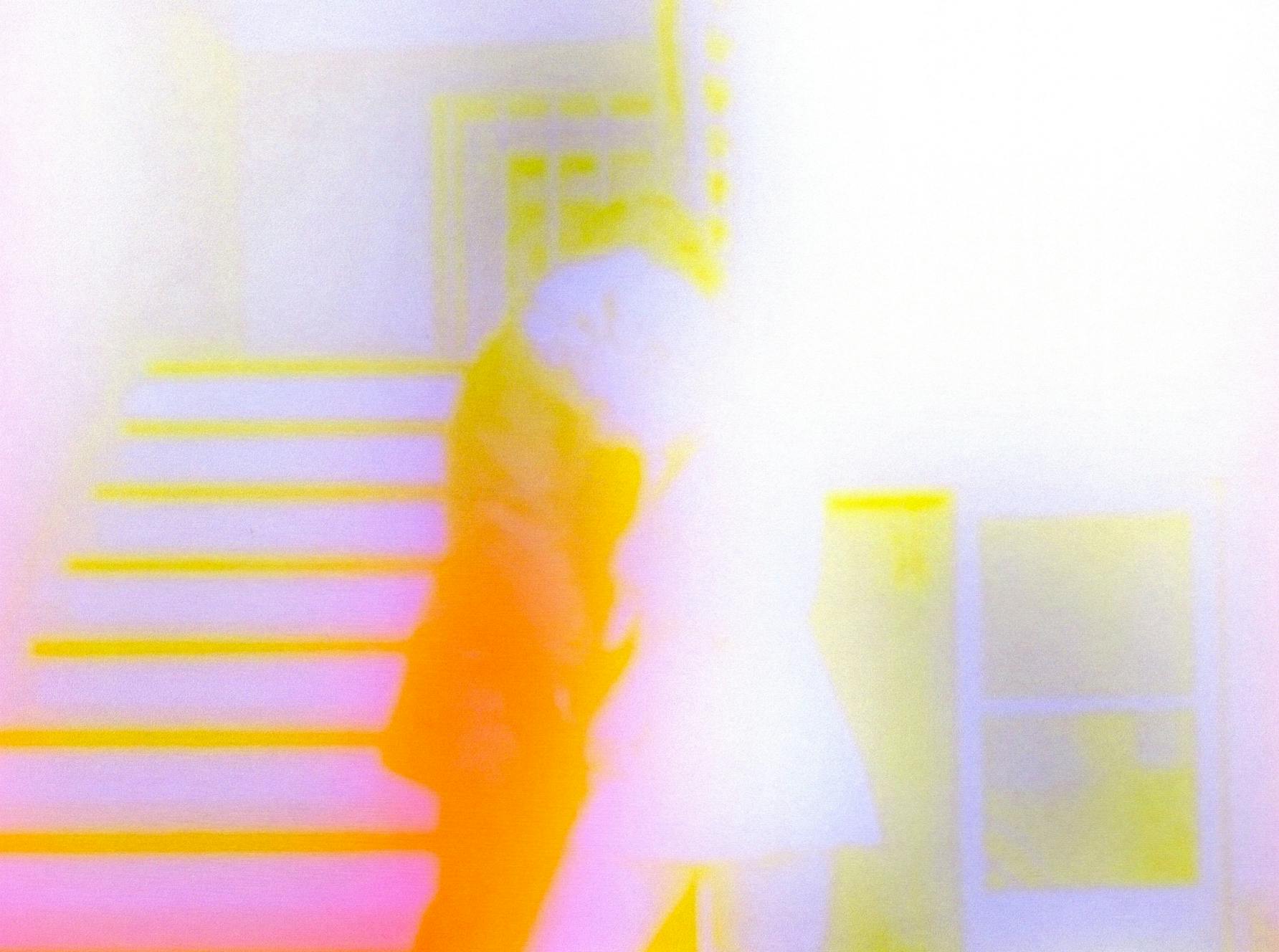
Everything is different, 2017. Continuously looping video (sound)
Welitoff considers movements—shifts in environment and person— in striking ways. Without a beginning, middle, or end, her work explores what happens simultaneously and all at once. Welitoff’s work, in turn, subverts one of the most essential aspects of film: having a narrative arc. She questions if it is necessary to have the past and future as points of reference for the present. In her work, the viewer is engrossed. The present is all we know.
Welitoff considers movements—shifts in environment and person— in striking ways. Without a beginning, middle, or end, her work explores what happens simultaneously and all at once. Welitoff’s work, in turn, subverts one of the most essential aspects of film: having a narrative arc. She questions if it is necessary to have the past and future as points of reference for the present. In her work, the viewer is engrossed. The present is all we know.
1. Smith, Patti. “Babel.” (New York: Putnam, 1978), 34.
2. Deleuze, Gilles. “Difference and Repetition.” (New York: Columbia University Press, 1994), 1.
3. @nanpansky, Twitter post, December 27, 1:31 p.m., https://twitter.com/nanpansky/status/1078342520709496832
4. Suara Welitoff, “Suara Welitoff—Shortly Afterwords,” Kunstgespräche.
5. Susan L. Stoops, “Suara Welitoff: Right Now This Moment,” (Boston: SMFA Tufts University, 2019).
6. Ibid.
7. Ibid.
8. Ibid.
Suara Welitoff: Right Now This Moment is on view in the Anderson Auditorium and Grossman Gallery at the SMFA at Tufts until 7 April 2019.
